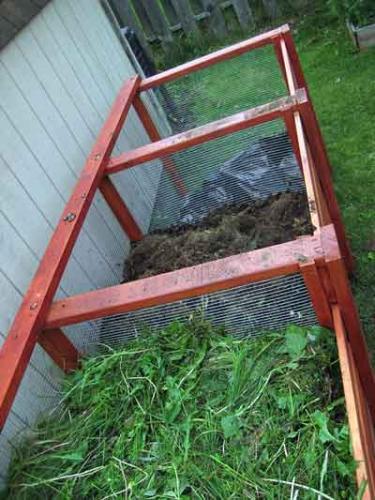Build smart soils using mulch, composted organic matter and reducing tillage
Learn steps for smart soil building right in your backyard or vegetable garden.

Home gardeners can build smart soils year round, but with the start of gardening season, now is a perfect time to plan and implement techniques that will create healthy soils for your vegetable garden. Sustainable practices include use of organic mulches, composted material and reducing tillage. Home gardeners can also look for more local sources of mulch and composted material.
Organic mulches
Organic mulches can be grass clippings, compost, mulched leaves, wood chips, shredded bark, marsh hay or straw. All organic types of mulch break down over time and add nutrients back to the soil. Be cautious with the use of chips or bark; you may want to use it between your rows or areas of vegetable plantings rather than against the base of plants. Use chips or bark that isn’t freshly chipped and place it on top of soil rather than mixing it into the soil.
Where can gardeners find mulches? Look first within your own backyard. Michigan State University Extension does advocate that you return your glass clippings and mulched leaves back to your lawn, but if you have an excess of leaves, you can alternate mulching leaves on your lawn with bagging them up. Use the bagged ones as mulch on your vegetable garden. Additional local mulch sources may include a city’s yard waste collection site, a lumber mill for wood chips (make sure they have aged and dried for a season), or a feed mill or farmer for straw or marsh hay.
Be sure to apply 3 inches of mulch around vegetables and flowers. Mulch will not only add to the soil’s health as it breaks down, but it will also conserve water by reducing evaporation of water from the soil surface. Use of mulch provides a more even soil moisture for plants, thus decreasing stress. It also serves as a barrier against weed seeds, therefore you will have less weeding.
Compost material
Creating composted material or organic matter is another sustainable and smart gardening practice. Make use of a backyard compost system in order to create your own organic matter. Something as simple as three 4x4 untreated wooden pallets fastened together will work. In here, you can place all of your vegetable scraps from the kitchen and excess yard waste.
It’s important to add the right ratio of carbon sources to nitrogen sources within your compost pile. The proper ratio aids in the decomposition or breakdown of this organic material by microbes which need to be present for your pile to work. Using a mixture of brown sources (carbon) such as fallen leaves or wood chips to green sources (nitrogen) such as leafy green plants will help your pile have the right ratio.
It’s also important to allow the pile to heat up internally to a temperature of 130-160 degrees. Be sure that the pile does not dry out during this time. Be sure to provide air to your pile by mixing it. Again, you can also seek out local sources of compost at city compost sites or perhaps a local farm may offer composted material for purchase. Some things to consider, especially for local pickup sources, is whether or not the material has been prepared properly to prevent weed seeds. Also, whether or not pesticides were applied would be difficult to determine with a city compost site collecting from numerous lawns.

Collecting compost. Photo credit: Mcav0y, Flikr.com
Reducing tillage
Reducing the amount of tillage will also lead to healthier soil. Too much tillage breaks down the natural structure of the soil. Tillage also releases carbon into the atmosphere, thus upsetting the required carbon to nitrogen ratio that microbes within the soil need in order to live and continue the decomposition process that the soil relies upon. Use of mulch and addition of composted material with minimal soil disruption will help build you a healthier soil. It probably won’t all happen this year, but you can begin the process.
Other techniques for minimal tillage include use of root crops, such as longer radishes or turnips, to help break up soil particles and create air and water spaces. Check out the new Smart Soils video with MSU entomologist George Bird who highlights these important steps to a smart soil and shows us the living components within a healthy soil.
For more information on a wide variety of Smart Gardening topics, visit the Gardening in Michigan website at www.migarden.msu.edu or contact MSU’s toll-free garden hotline at 1-888-678-3464.



 Print
Print Email
Email


